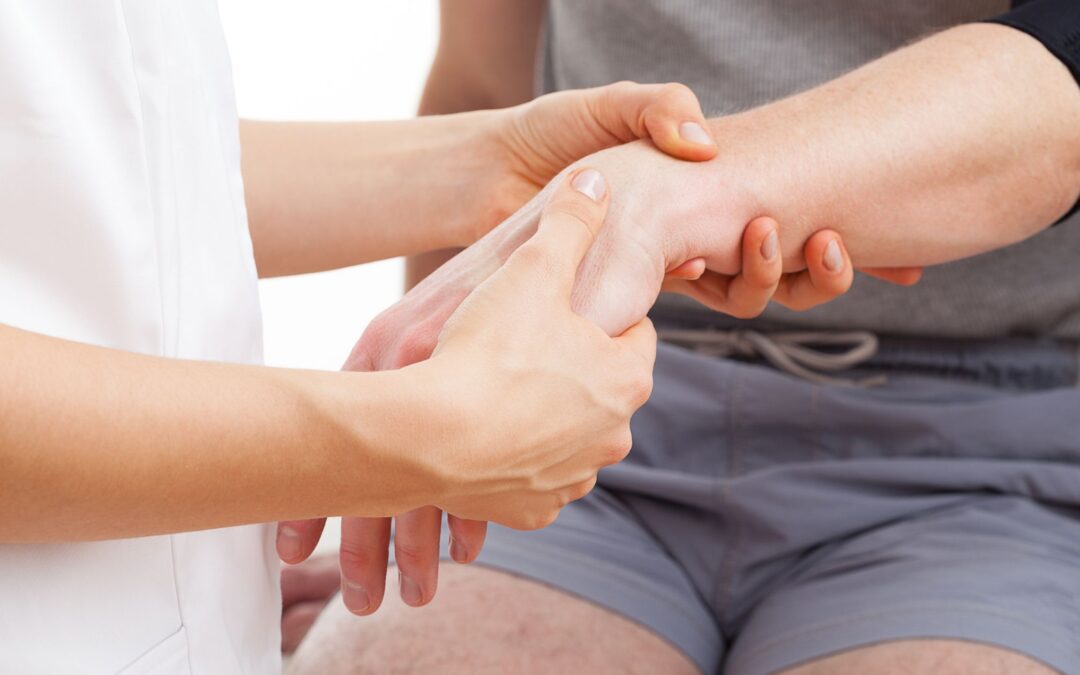Our St George hand and wrist surgery experts help patients find the right solutions for their injuries or conditions. In some cases, the answer may be surgery.
While finding out that you need hand and wrist surgery can be scary and intimidating, it’s often the best option to repair damage to your hand or wrist and help you get back to living pain-free as quickly as possible.
While the experts at our St George hand surgery clinic will help ensure that you’re ready for a successful recovery, there are a few things you can do to speed up the process. Keep reading to learn more.
How Long Does it Take to Recover From Hand or Wrist Surgery?
How long it will take you to recover from hand or wrist surgery depends on a variety of factors. The type of surgery you had, the severity of your injury, and even your age can all have an impact on your recovery time.
But there are also some things that you can do to help speed up your recovery. The following tips are a few things that you can do to speed up your recovery, prevent re-injuring yourself, and get back to feeling great and doing the things that you love.
Hand and Wrist Surgery Recovery Tips
The type of surgery that you have will have an impact on what your recovery looks like. For instance, if you had open surgery on your dominant hand for carpal tunnel syndrome, you may have to wait just 6 to 8 weeks to go back to work, especially if your work involves repetitive movements like typing. But after surgery for a flexor tendon injury, it can take up to 6 months to regain your full range of motion.
However, regardless of the type of hand or wrist surgery that you have, there are a few general tips that can help ensure a successful, fast recovery.
Ask Your Hand and Wrist Surgeon About the Signs and Symptoms of Complications
Many hand and wrist surgeries carry minimal risk of complications. Procedures for conditions like carpal tunnel syndrome and trigger finger are very routine. These procedures usually require only local anesthesia. In most cases, patients can go home just a short time after their procedure and may be back to work in just days or even less.
However, even with routine procedures, complications can still occur. This includes unusual bleeding, infections, excessive swelling, and other complications. Talk to your surgeon ahead of time about any possible complications. Ask about the common signs that you should watch for. Then, during your recovery, pay attention to how you feel, and what your hand, wrist, or fingers look like. If something seems unusual or is especially painful, reach out to your surgeon or visit an emergency room to get it checked out.
Elevate to Decrease Swelling
Swelling is common following many different types of surgeries. Also known as edema, post-surgery swelling happens when extra fluid becomes stuck in the body’s tissues. This occurs because, during surgery, your St George hand and wrist surgeon will make incisions and manipulate tissue during your procedure. This triggers your tissues to retain fluid. With this fluid retention, the impacted tissues are flooded with white blood cells and proteins that help with healing.
While this promotes natural healing, it also causes swelling in those areas. This swelling, while normal, can cause some pain and pressure, and can sometimes limit your mobility post-surgery.
Some procedures cause more swelling than others. Your body’s own tendency to retain fluids can also impact the amount of swelling that you experience. Swelling may start shortly after a procedure is complete, and continue to worsen for 72 hours or more after the surgery. One great way to decrease swelling following hand and wrist surgery is to elevate your hand above your heart. You can use pillows to elevate your hand/arm while resting at a home, and a sling to keep your arm raised while out.
Another thing that can help to reduce swelling is to apply ice on the affected area. Use gel packs or a cold pack three to five times a day. Avoid applying ice for more than 10 minutes at a time.
Follow Your Doctor’s Instructions on Movement
Some surgeries require you to keep your arm, hand, or fingers immobilized for a certain period of time post-surgery. But odds are that your surgeon will urge you to get moving within just hours or days after your surgery. Doing so can help reduce swelling, promote recovery, and help prevent your muscles from becoming stiff.
Sometimes, and especially immediately after your surgery, this movement may be uncomfortable or even a little painful. However, it’s very important to make sure that you’re getting moving when your surgeon tells you to.
Failure to move properly post-surgery can cause you to lose muscle mass. This can slow down your recovery and cause you to lose your range of motion. If you want to get back to enjoying the activities you did before your hand or wrist injury, it’s important to follow all of your surgeon’s recommendations post-surgery.
Depending on the type of injury and surgery, your surgeon may also recommend that you attend physical therapy. This can help you regain your range of motion and build back any muscles you’ve lost in your hand, fingers, and arm.
Don’t Rush Your Recovery
It can be tempting to go back to work, hit the gym, or otherwise get back to normal activities as quickly as possible post-surgery. But even if you’re not experiencing pain, it’s important to give yourself time to heal! Follow your St George hand surgeon’s recommendations on returning to your full activity level. Otherwise, you could wind up slowing down your recovery or even re-injuring yourself.
Preparing for Hand and Wrist Surgery
From elevating and icing your hand and wrist to attending physical therapy, these tips can help ensure a successful recovery post-surgery.
Our St George hand and wrist surgery experts will make sure that you know exactly what you can and can’t do post-surgery. We’ll help you develop a plan for your recovery to get you back to doing what you love pain-free as quickly as possible.
Another great way to ensure a successful post-surgery recovery is to properly prepare before your surgery. Check out these tips to learn what you need to know to prepare for hand or wrist surgery.

